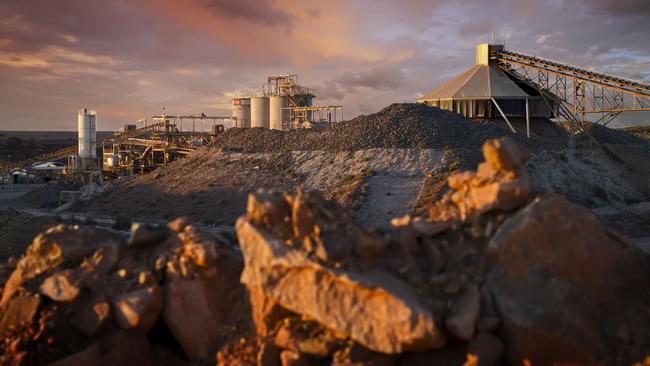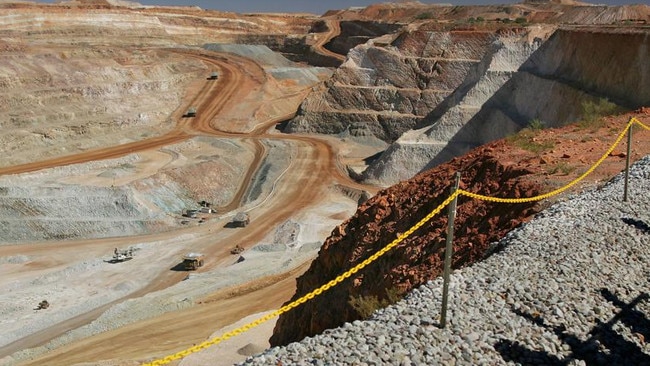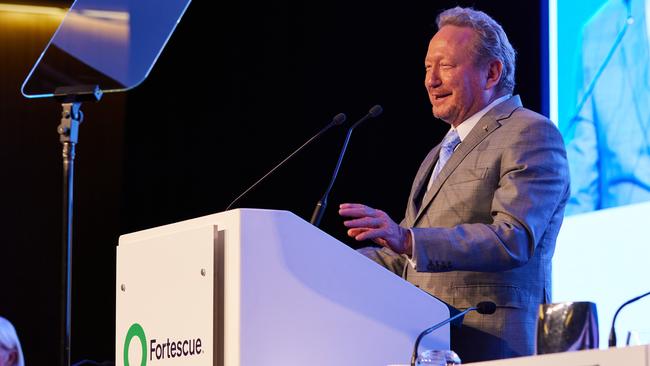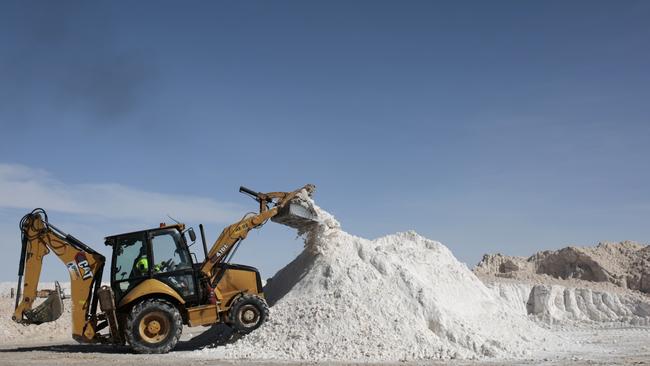Gold and uranium companies deliver best returns in resources in 2023 as lithium falls from grace
Lithium lost some of its appeal in 2023, while the best returns for resources investors came from the old commodity faithful – gold.

The disappearance of two big mining names reshaped the Australian listed mining market in 2023, with the return of uranium and the fall from grace of critical minerals companies delivering mixed blessings for investors in the sector.
But gold companies delivered the best returns within the mid-cap resources sector, with the top 10 total returns – including share price movements and dividends – on the S&P/ASX 300 Resources index topped by three gold miners.
Newmont’s blockbuster takeover of Newcrest Mining topped the merger and acquisition activity in the metals sector in 2023, with BHP’s $9.6bn move to acquire OZ Minerals stripping the ASX of its biggest pure copper play.
But the top 10 biggest returns in the mid-cap resources sector came from gold miners, led by Morgan Hart’s Emerald Resources, which delivered a total shareholder return of more than 150 per cent for the year, ending 2023 with a market capitalisation of just under $2bn.
Gold should have been a stellar performer in any year in which soaring inflation across the globe dominated the economic headlines, but Australian miners have suffered badly from ongoing labour shortages and rising costs that have undermined their profitability.

Gold started the year worth about $2680 an ounce, in Australian dollar terms – or around $US1815 an ounce, according to Bloomberg data. It hit a high of $3168 an ounce in October, and finishes the year trading closer to $3030 an ounce.
Emerald’s rise came as it turned its Okvau gold mine in Cambodia into a reliable production hub, worth about 100,000 ounces a year, with the company flagging all-in sustaining costs of $US780-$US850 an ounce for the current financial year. The company has a second gold project in Cambodia and is looking to establish a new high-grade project in Australia courtesy of a long-running takeover tilt for Bullseye Mining.
Westgold Resources takes the biscuit for the turnaround story of the year, with a 147 per cent total return in 2023. The company met guidance for the year, unlike many of its peers, and has turned what were previously seen as marginal operations into a steadily building pile of cash.
It is joined by Resolute Mining as a turnaround story for the year, with the once-struggling West African gold miner hitting a 126 per cent total return for the year.
Australian gold producers Ramelius Resources and Red 5 also appear in the top 10 best performers in the S&P/ASX 300 Resources index for the year, up 84 per cent and 52.5 per cent respectively.
But the return of interest in uranium stocks also marked the year, as the market turned bullish on the commodity on fears that Russia’s war in Ukraine could threaten supplies to developed countries, and interest in nuclear power in baseload generation rises as a carbon-neutral alternative to fossil fuel power stations.

Uranium oxide spot prices in November broke through $US80 a pound – a figure seen as the incentive price to help kickstart new uranium mines.
Boss Energy, which expects to begin production at its Honeymoon uranium project in South Australia next year, finished 2023 up more than 90 per cent for the year, with Deep Yellow – which has a project in Western Australia – up 56.5 per cent.
Andrew Forrest’s Fortescue also made the top 10, weighing in at No.7 on a total return basis, delivering a 53.3 per cent return including dividends. While plenty of doubts remain about Dr Forrest’s much-hyped hydrogen strategy, the shift to an energy focus has helped decouple the company’s stock from purely trading in line with the iron ore price – but surging prices for the steelmaking commodity late in 2023 still helped lift Fortescue’s share price to record levels.
Tumbling lithium prices have dominated headlines in the mining sector in the second half of the year, and the three biggest losers on the S&P/ASX 300 Resources index for 2023 are all lithium plays.
Lake Resources shares closed 2023 more than 83 per cent down for the year, with the company punished for a mid-year update for its flagship Kachi project in Argentina that flagged massive delays and substantially lower production than bullish projections from earlier in the company’s life.

Rather than be producing 50,000 tonnes a year of lithium carbonate from 2024, the company said it would instead aim for 25,000 tonnes a year from 2027 – and Lake would need to raise about $US1.4bn to build the brine operation, more than twice the $US544m estimate given in 2021.
Lake’s board was also forced to a spill motion at the company’s annual shareholder meeting after a second consecutive backlash against its remuneration report.
Core Lithium stock has also tumbled on falling lithium prices, with the company last week halting work to send mining underground at its Northern Territory lithium operation to preserve cash – potentially a precursor to similar decisions across the sector.
Savvy market watchers know a company is in real trouble when they see a chief executive calling for a ban on short sellers, and Chalice Mining shareholders have been feeling the sting since late August after the company delivered an underwhelming scoping study on its Gonneville project in WA, tipped as a major deposit of platinum group elements, nickel and copper.
Initial capital projections of $1.6bn-$2.3bn suggests Chalice will need a buyer – or at least a major partner with deep pockets – to build the mine, but despite intense speculation none have so far emerged from the woodwork.
Chalice shares finished down 73 per cent for the year, about the same levels down as would-be critical minerals recycling company Neometals, with former graphite market darling Syrah again taking a battering in 2023, down 68.5 per cent.





